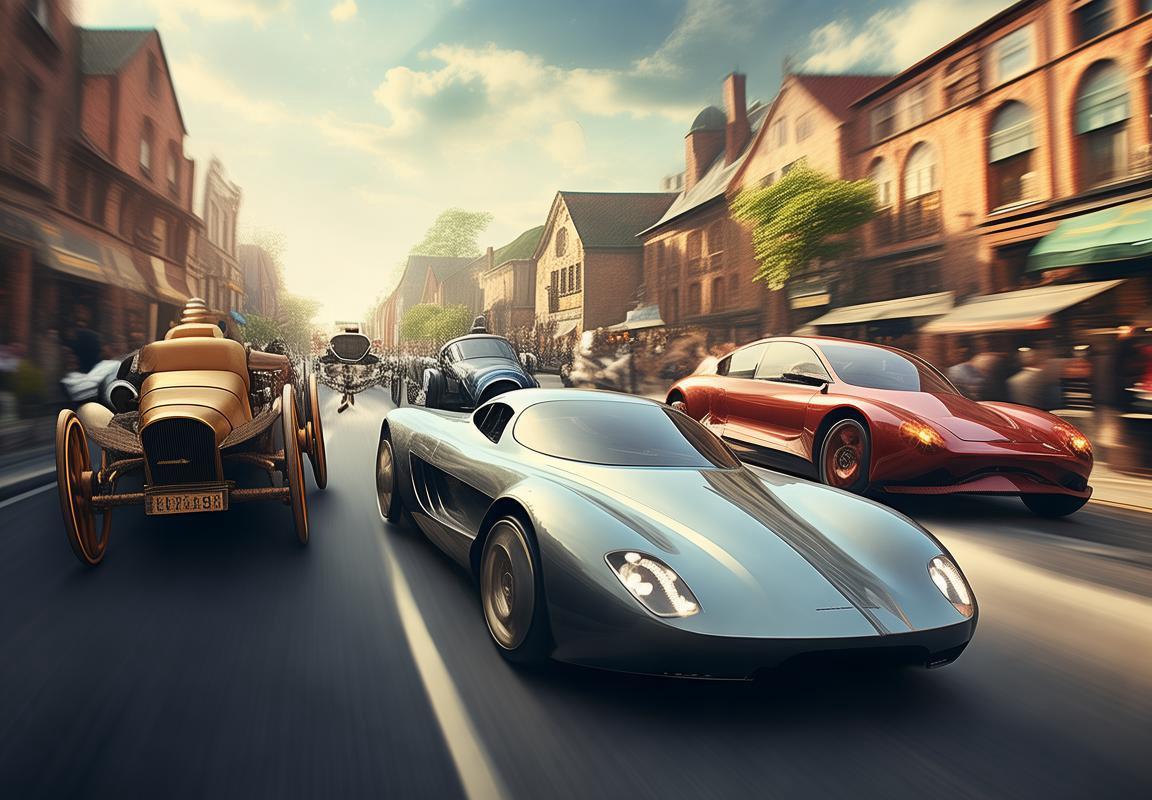In the realm of automotive performance, the balance between raw speed and controlled efficiency is a delicate dance. This article explores the concept of drag, its impact on vehicle dynamics, and how engineers and drivers alike strive to harness its power for both speed and efficiency.
The Evolution of Vehicle Dynamics
- As technology advances, so does the understanding of how vehicles interact with the road.
- Early cars relied on brute force, while modern vehicles harness sophisticated aerodynamics.
- The transition from horse-drawn carriages to steam-powered engines set the stage for dramatic changes.
- Early Man’s Interaction with Motion
- Ancient civilizations marveled at the concept of motion, experimenting with wheels and pulleys.
- The invention of the internal combustion engine in the late 19th century marked a significant leap.
- This era saw the birth of the modern vehicle, blending mechanical innovation with human ingenuity.
- The Birth of Automotive Engineering
- The early 20th century witnessed the rise of automotive engineering, focusing on performance.
- The development of anti-lock braking systems and airbags signaled a shift towards safety.
- Today, vehicles are a blend of efficiency, speed, and technology, a testament to human progress.

Drifting: The Art of Control
- The essence of drifting lies in the seamless transition from forward motion to controlled sliding. It’s not just a maneuver, but a dance with the vehicle’s limits.
- Skilled drifters manipulate steering, throttle, and brakes to create a controlled loss of traction, allowing the wheels to spin and the car to slide gracefully. Precision is key.
- Drifters often use the environment to their advantage, utilizing corners, slopes, and even off-road terrain to practice their craft. The art is in making it look effortless.
- Drifting requires a deep understanding of the car’s dynamics, from suspension setup to tire grip. It’s a balance of power and control that can be thrilling and challenging.
- The visual appeal of a well-executed drift is undeniable, with the car seemingly defying gravity, its body contorted in a perfect arc. It’s a spectacle that captivates onlookers.
- Drifting isn’t just about speed; it’s about timing and finesse. The ability to correct a slide with precision is what separates a good drifter from an excellent one.
- Safety is paramount in drifting, as the margins for error are thin. Drifters must be acutely aware of their surroundings and the capabilities of their vehicle.
- The culture of drifting has its roots in motorsport, with roots in rally racing and street racing. It’s evolved into a unique subculture with its own set of enthusiasts.
- Drift events and competitions have gained popularity, showcasing the skill and artistry of drifters. It’s become a spectacle that bridges the gap between street and track.
- Drifting has inspired a generation of drivers, teaching them to push the limits and respect the power of their vehicles. It’s a testament to human ingenuity and the joy of the ride.

Drag: Efficiency and Speed
- The essence of drag lies in the aerodynamics of a vehicle. Its shape affects how air flows around it, creating resistance that slows down the car.
- Drag forces are calculated based on the vehicle’s speed, frontal area, and the coefficient of drag. This science is crucial for optimizing performance.
- High-performance cars minimize drag through sleek designs, reducing air resistance and allowing for faster acceleration and higher top speeds.
- Drag coefficients vary from one car to another, with lower numbers indicating less drag. The aerodynamic shape is key to achieving these figures.
- Cars like the McLaren P1 and Ferrari LaFerrari showcase advanced aerodynamics, using downforce to counteract drag and improve stability.
- Aerodynamic features like spoilers, diffusers, and underbody panels are strategically placed to manage airflow and enhance efficiency.
- Drag also influences fuel consumption, with streamlined vehicles requiring less energy to maintain speed. This is vital for long-distance travel.
- The pursuit of efficiency in drag reduction has led to innovations in materials and construction techniques, improving vehicle performance overall.
- Modern vehicles employ sophisticated aerodynamic testing, using wind tunnels and computer simulations to fine-tune designs.
- The balance between drag and downforce is a delicate one, crucial for achieving the perfect blend of speed and handling in a vehicle.